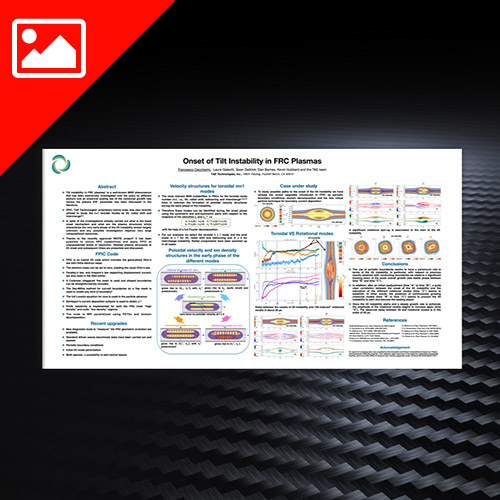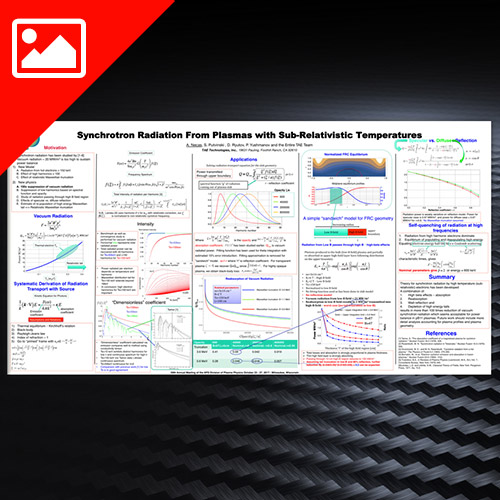
Nov 2018 | Research Library, Posters, Equilibrium, Fusion Energy, Fusion Research, Fusion Science, Fusion Technology, Instabilities, Plasma Research, Simulation
October 2018 | F. Ceccherini | APS-DPP | Poster
Tilt instability in FRC plasmas1 is a well-known MHD phenomenon that has been extensively investigated over the years by different authors and an empirical scaling law

Feb 2018 | Research Library, Papers, Equilibrium, Fusion Energy, Fusion Research, Fusion Science, Fusion Technology, Modeling, Plasma Research, Theory, Transport
February 2018 | L. Steinhauer | Physics of Plasmas | Paper
Coupled transport is the close interconnection between the cross-field and parallel fluxes in differ- ent regions due to topological changes in the magnetic field. This occurs because perpendicular transport is necessary for particles or energy to leave closed field-line regions, while parallel transport strongly affects evolution of open field-line regions.

Oct 2017 | Research Library, Posters, Equilibrium, Experiment, Fusion Energy, Fusion Research, Fusion Science, Fusion Technology, Plasma Profiles, Plasma Research
October 2017 | J.A. Romero | APS-DPP | Poster
FRC physics understanding benefits from advanced scientific analysis tools such as Bayesian analysis, which allow comparison of various physics models according to their data evidence.

Oct 2017 | Research Library, Posters, Equilibrium, Fusion Energy, Fusion Research, Fusion Science, Fusion Technology, Plasma Research, Theory, Transport
Oct 2017 | A. Necas | APS-DPP | Poster
Theory for synchrotron radiation by high temperature (sub- relativistic) electrons has been developed

Sep 2017 | Research Library, Papers, Equilibrium, Fusion Energy, Fusion Research, Fusion Science, Fusion Technology, Simulation, Theory, Transport
September 2017 | M. Onofri | Physics of Plasmas | Paper
The transport phenomenon of a Field Reversed Configuration (FRC) is studied using the newly developed two-dimensional code Q2D, which couples a magnetohydrodynamic code with a Monte Carlo code for the beam component. The simulation by Q2D of the transport parallel to the simple open h-pinch fields and its associated outflow phenomenon shows an excellent agreement with one of the leading theories, elevating the Q2D validity and simultaneously deepening the theoretical understanding of this fundamental process.

Aug 2017 | Research Library, Papers, Equilibrium, Fusion Energy, Fusion Research, Fusion Science, Fusion Technology, Simulation, Stability, Theory, Turbulence, Waves
August 2017 | C. K. Lau | Physics of Plasmas | Paper
Gyrokinetic simulations of C-2-like field-reversed configuration (FRC) find that electrostatic drift- waves are locally stable in the core. The stabilization mechanisms include finite Larmor radius effects, magnetic well (negative grad-B), and fast electron short circuit effects.





